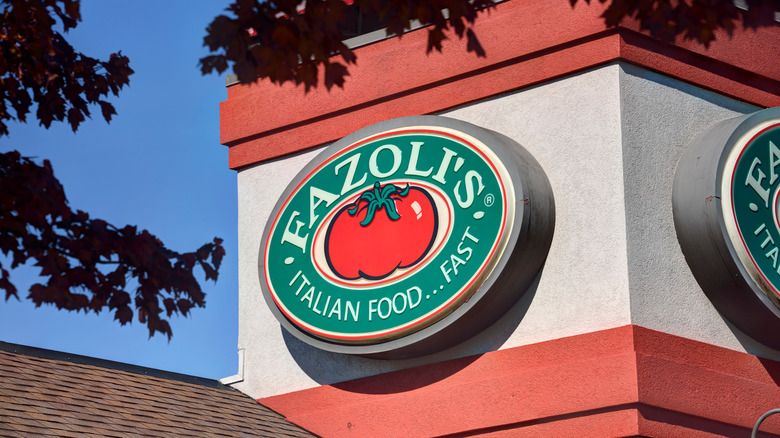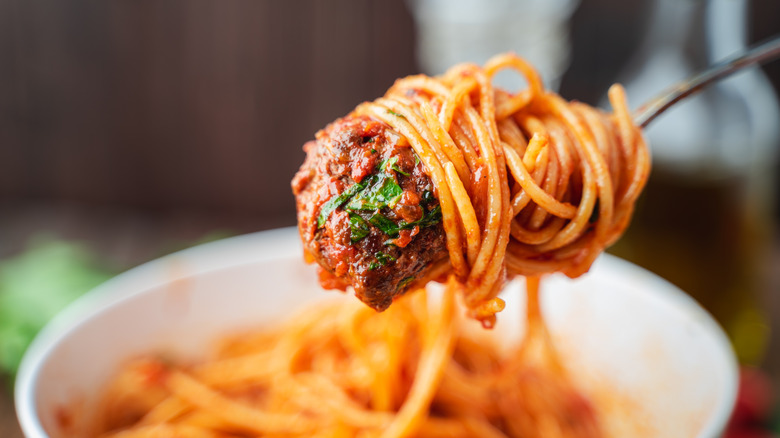The Reason Fazoli's Isn't Actually Authentic Italian Food
On Tripadvisor, a couple of reviews deemed the Fazoli Italian Restaurant chain worthy of one star and the designation of "Not Italian Food." "This is a mix between pizza hut and olive garden," one explained before complaining of indigestion and how every dish tasted reheated.
However, all the pictures of Fazoli's appear vaguely, albeit unnaturally, Italian. Writing on Atlas Obscura, Emily Monaco uses the idea that cuisines, like languages, operate on a grammar to show how badly chain restaurants like Fazoli's mistranslate the food they purport to be selling. In addition to the iconic signs of Italianness, like the green, red, and white color scheme, Fazoli's acts like Ocracoke Islands, where North Carolinians still speak Elizabethan English. Separated from a home culture that has moved on, Fazoli's represents a view of what an Italy should look like and taste like. In Italy, of course, no one actually eats that way.
The whole project, then, is a reheated, pre-made cuisine.
Spaghetti and meatballs is peak Fazoli's
The creation of Fazoli's image of Italian food may follow the trajectory of spaghetti and meatballs from an immigrant's improvised meal to one of the quintessential "Italian" dishes.
Escoffier, the online culinary school, wrote about how in Italy, spaghetti and meatballs are served as separate dishes and only appear together as an attempt to appease Americans for whom the dish represents the country. The origins of the dish are that when Italian immigrants arrived in the United States, they had less money, and so focused on ensuring meat was served as a staple. Similarly, the gravy and pasta were introduced because canned tomatoes and spaghetti were the only Italian items available. As these were the most available ingredients to fuel a satisfying meal, they inevitably developed into the spaghetti and meatballs most are familiar with.
Fazoli's, then, is not just a gesture back towards an Italy, it is a gesture back towards an Italy misremembered as the food formed during the hardships of immigration.

